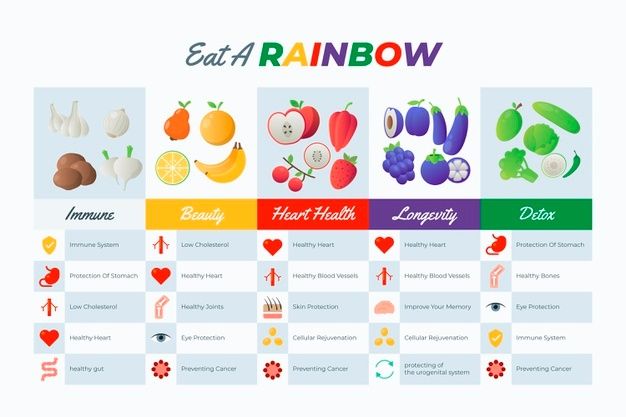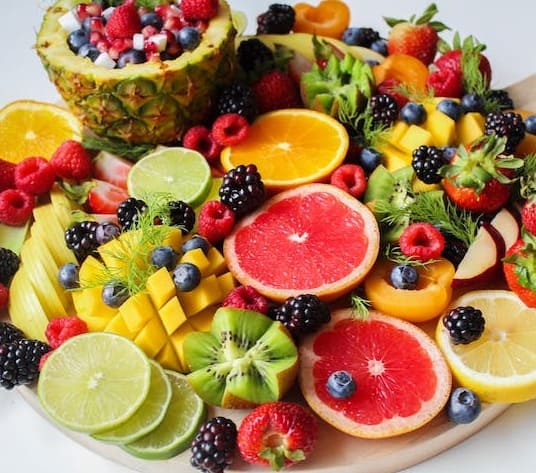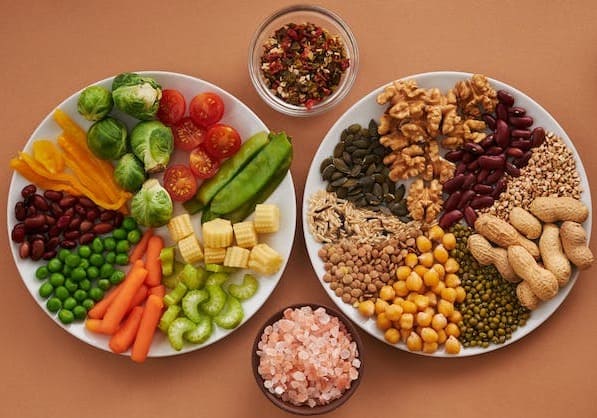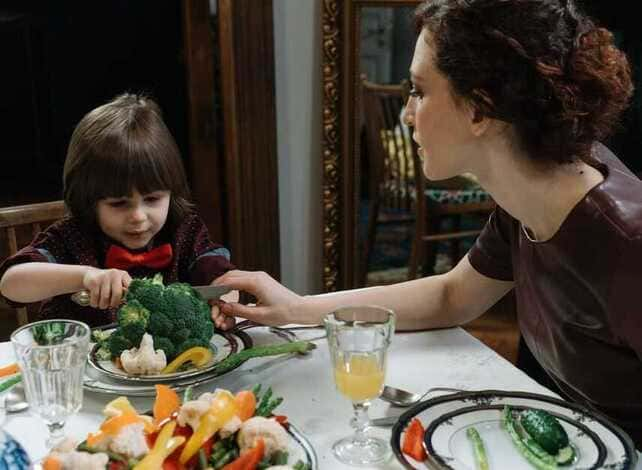Eat the Rainbow for Kids: Need for Colorful Nutrition
As parents, ensuring that kids maintain a healthy and balanced diet is a top priority. In today’s world of convenient processed foods and busy schedules, introducing wholesome nutrition can be challenging. One powerful way to encourage kids to embrace nutritious eating habits is by introducing them to a colourful variety of fruits and vegetables. Each colour in fruits and vegetables represents different nutrients and antioxidants that are essential for kids growth and development. The “eat the rainbow for kids” approach transforms mealtime into a colorful adventure that children actually enjoy. In this article, we will explore the significance of incorporating a diverse range of colourful produce into kids’s diets and the numerous benefits this practice offers for their growth and development.

The Importance of Eat the Rainbow for Kids
Kids are in a constant state of physical and cognitive development, requiring a consistent supply of high-quality nutrients to support everything from bone growth to brain development. Colorful fruits and vegetables provide these nutrients in their most natural and bioavailable forms, working synergistically to promote overall health in ways that even the best supplements cannot replicate.
Essential Nutrients for Growth
-
Kids require a wide array of nutrients for healthy growth and development, and colourful fruits and vegetables provide a rich source of vitamins, minerals, and antioxidants.
-
These nutrients play a vital role in supporting kids’s overall health, strengthening their immune systems, and promoting optimal growth.
Establishing Healthy Eating Habits
-
Introducing kids to a variety of colourful produce at a young age can help shape their taste preferences and encourage them to appreciate the flavors and textures of different fruits and vegetables.
-
By making colourful produce a regular part of their diet, kids are more likely to develop lifelong habits centered around nutritious eating.
A study published in the Journal of Nutrition Education and Behavior found that kids exposed to a variety of fruits and vegetables before age five were significantly more likely to maintain diverse, nutritious eating habits as teenagers and adults. This early exposure helps mitigate picky eating and creates a foundation for lifelong healthy eating patterns.
Cognitive Development
-
The nutrients found in colourful fruits and vegetables, such as vitamin C, folate, and antioxidants, are essential for supporting kids’s cognitive development and brain function.
-
A diet rich in colourful produce has been linked to improved concentration, better memory, and overall cognitive performance in kids.
How to Eat the Rainbow for Kids: Color by Color Guide
Red and Pink: Powerful Protectors
-
Fruits and vegetables with red and pink hues, such as strawberries, tomatoes, and red bell peppers, are packed with vitamin C and powerful antioxidants.
-
These nutrients support kids’s immune systems, contribute to healthy skin, and aid in wound healing.
Kid-friendly red options: Watermelon slices, strawberry smoothies, cherry tomatoes with dip, and raspberry yogurt parfaits make incorporating red foods enjoyable for kids.
Orange and Yellow: Vision and Growth Supporters
-
Produce like carrots, sweet potatoes, and mangoes are abundant in beta-carotene, vitamin A, and vitamin C.
-
These nutrients are essential for maintaining good vision, supporting healthy growth, and boosting immune function.
Kid-friendly orange and yellow options: Mango slices, carrot sticks with hummus, roasted sweet potato “fries,” and corn on the cob provide appealing ways to incorporate these colors.
 |
 |
|---|
Green: Building Blocks for Growth
-
Leafy greens, broccoli, and kiwi provide kids with essential nutrients such as calcium, folate, and vitamin K.
-
These nutrients are crucial for building strong bones, supporting blood clotting, and aiding in overall growth and development.
Kid-friendly green options: Kiwi slices, pesto made with spinach, steamed broccoli “trees” with cheese sauce, and green smoothies with hidden spinach make green foods more approachable.
Blue and Purple: Brain Boosters
-
Blueberries, grapes, and eggplants contain powerful antioxidants known as anthocyanins, which have been associated with improved memory and cognitive function in kids.
-
These antioxidants also contribute to overall heart health and support healthy aging.
Kid-friendly blue and purple options: Frozen blueberries as snacks, purple grape kabobs, blueberry pancakes, and purple smoothie bowls make these brain-boosting foods appealing.
White and Brown: Immune Supporters
Though not as colorful, white and brown produce like bananas, cauliflower, mushrooms, and potatoes contain important compounds like potassium, fiber, and selenium that support:
- Digestive health: The fiber in these foods supports healthy gut bacteria and proper digestion.
- Energy production: Complex carbohydrates provide sustained energy for active kids.
- Immune function: Compounds in mushrooms and garlic have been shown to support natural immune defenses.
Kid-friendly white and brown options: Banana “sushi” rolls, cauliflower “popcorn,” roasted potatoes, and mushroom quesadillas introduce these important foods in kid-friendly ways.
Practical Tips for Encouraging kids to Eat colourful Produce
Make it Fun
Introduce colourful fruits and vegetables to kids through fun and creative presentations, such as fruit kebabs, smoothie bowls, or vegetable “rainbows” on their plates. Engaging kids in the preparation process can also foster a positive association with colourful produce.
Lead by Example
Set a positive example by incorporating a variety of colourful fruits and vegetables into your own meals and snacks. kids are more likely to embrace nutritious eating habits when they see adults around them enjoying and valuing colourful produce.
Model Healthy Eating Habits
kids learn primarily by observation. When they see parents and caregivers enjoying colorful produce, they’re more likely to follow suit:
- Eat family meals together whenever possible
- Express genuine enjoyment when eating fruits and vegetables
- Avoid negative comments about foods you personally dislike
- Make colorful produce a normal part of every meal and snack
Education and Exploration
Teach kids about the different colours of fruits and vegetables and the unique health benefits associated with each colour. Take kids to farmers’ markets or grocery stores and involve them in selecting colourful produce, encouraging a sense of curiosity and exploration.
Overcoming Common Challenges
Even with the best strategies, parents often encounter obstacles when introducing colorful produce. Here are solutions to common challenges:
Picky Eating
- Start with naturally sweeter fruits and vegetables before introducing more bitter ones
- Pair new foods with familiar flavors or dips
- Involve kids in choosing how vegetables are prepared
- Consider “food chaining”—gradually moving from accepted foods to similar but more nutritious options
Limited Time and Resources
- Keep frozen fruits and vegetables on hand for quick additions to meals
- Prepare produce in advance for easy grab-and-go options
- Start with affordable, seasonal options that offer the most nutritional bang for your buck
- Use simple preparation methods like steam-in-bag vegetables for convenience
Competing Food Influences
- Limit exposure to heavily marketed processed foods
- Create consistent rules about treats and less nutritious options
- Use naturally colorful foods to recreate favorite processed items (e.g., fruit popsicles instead of sugary frozen treats)
- Talk positively about how colorful foods help bodies grow strong

Frequently Asked Questions About Eat the Rainbow for Kids
Q: How many colors should my child eat each day?
A: Aim for at least 3-4 different colors daily. The USDA MyPlate recommends filling half your child’s plate with fruits and vegetables, making variety natural and achievable.
Q: What if my child refuses certain colored foods?
A: Start with naturally sweeter options in each color group. For example, begin with red strawberries before introducing red bell peppers. Persistence and positive modeling are key.
Q: Are frozen fruits and vegetables as nutritious as fresh?
A: Absolutely! Frozen produce is picked at peak ripeness and can be more nutritious than fresh items that have traveled long distances. Keep frozen options on hand for easy rainbow additions to any meal.
Conclusion: A Lifetime of Colorful Nutrition
Introducing kids to a colourful variety of fruits and vegetables from an early age is a powerful way to instill healthy eating habits and support their overall growth and development. By providing kids with a diverse range of nutrient-rich produce, parents and caregivers can contribute to their kids’s well-being, cognitive development, and long-term health. Encouraging kids to “eat the rainbow” sets the foundation for a lifetime of healthy eating habits and paves the way for a vibrant and nourished future.
By teaching kids to “eat the rainbow,” we provide them not just with nutrients, but with an appreciation for the natural diversity and goodness of whole foods—a gift that nourishes both body and mind for years to come.





